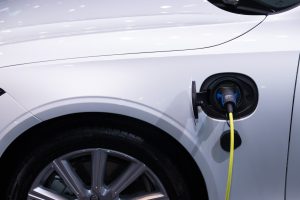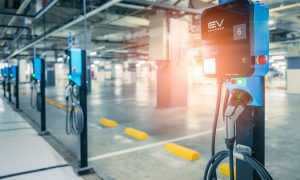Many of our clients own or want to buy a plug-in electric vehicle (EV) or Fuel Cell Vehicle (FCV). And we’ve gotten a lot of questions about how this affects taxes as we embark on tax season.
Most importantly, the IRS has changed the “New Clean Vehicles” tax credits for 2022 or before, and 2023 or after, which we will summarize in the chart and discuss in detail below, starting with these points.
- WHO qualifies?
- HOW MUCH is the credit?
- WHAT vehicles qualify? (It’s wise to check the IRS list for specific manufacturers and models included.)
- HOW DO YOU claim the credit?
AGAIN: These tax credits apply to NEW Clean Vehicles only.
The chart below is designed to save you time. As always, it is wise to read the IRS ruling verbatim and double-check with your accountant to ensure you understand and capture all the details, some of which are covered below the chart.
COMPARISON of 2022 and 2023 EV Tax Credits |
||
| Questions Answered | EV Purchased NEW in 2022 or before | EV Purchased NEW
In 2023 or after |
| WHO qualifies? | You may qualify for a credit of up to $7,500 for buying a qualified new car or light truck. The credit is available to individuals and businesses though certain limitations may apply to those owned by a business
To qualify, you must buy the vehicle for: · Your own use (not for resale) · Use primarily in the U.S.
|
Your modified AGI (adjusted Gross Income) may not exceed**
· $300,000 for married couples filing jointly · $225,000 for heads of households · $150,000 for all other filers NOTE: ** This is a ”cliff test,” meaning if a taxpayer is $1 over the amounts listed, they are ineligible for the credit.
|
| HOW MUCH is the credit amount? | The tax credit amount is $2,917 for a new electric vehicle with a battery capacity of at least five (5) kilowatt hours (kWh) + $417 for each kWh of capacity above five (5) kWh — to a maximum of $7,500.
|
You may qualify for a credit of up to $7,500 under Internal Revenue Code Section 30D. |
| WHAT vehicles qualify? | To qualify, a vehicle must:
· Have an external charging source; · Have a gross vehicle weight rating of fewer than 14,000 pounds* (seven tons); · Be made by a manufacturer that hasn’t sold more than 200,000 EVs in the U.S. * You can find your vehicle’s weight on the vehicle’s window sticker or online based on the VIN (Vehicle Identification Number).
|
To qualify, a vehicle must:
· Have a battery capacity of at least seven (7) kilowatt hours; · Have a gross vehicle weight rating of fewer than 14,000 pounds*(seven tons); · Be made by a qualified manufacturer. See the IRS’s index of qualified manufacturers and vehicles. In addition, the vehicle’s MSRP (manufacturer’s suggested retail price) cannot exceed: · $80,000 for vans, SUVs, and pickup trucks · $55,000 for other vehicles (This list includes models and prices.) · AND the vehicle must undergo final assembly in North America. (This is new for 2023.) |
| HOW to claim the credit | Use Form 8936, Qualified Plug-in Electric Drive Motor Vehicle Credit (Including Qualified Two-Wheeled Plug-in Electric Vehicles) to figure out your credit and file it with your 2022 tax return. You will need to provide your vehicle’s VIN. | Use Form 8936, Qualified Plug-in Electric Drive Motor Vehicle Credit (Including Qualified Two-Wheeled Plug-in Electric Vehicles) to calculate your credit and file it with your 2023 tax return. You will need to provide your vehicle’s VIN.
· Sellers are required to report your name and taxpayer identification number to the IRS for you to be eligible to claim the credit. (This is also slightly different from 2022).
|
More Details on Electronic Vehicles Tax Credits
- In the past, there was a limit on the number of cars per manufacturer. That has been replaced by the vehicle’s final assembly location, which must be in the U.S. The 200,000-per-vehicle manufacturer limitation is repealed applicable to vehicles sold after December 31, 2022, meaning taxpayers can claim the full credit for qualifying cars sold beginning in 2023 for vehicles manufactured by those on the IRS’s Qualified Clean Vehicles Purchased in 2023 list. Several makes and models are allowed, from Audi and BMW to Volkswagen and Volvo, based on the MSRP $55,000 and $80,000 limits. The MSRP limit does not include any dealer added options, so as long as the straight MSRP is below these limits the car may qualify.
- For vehicles sold after August 16, 2022 (the date of enactment), only those whose final assembly is in the U.S. will qualify for current and future credits. This website is a good place to find where the car was assembled. It states that while the build location of a specific vehicle should be available on the label affixed to the vehicle, the U.S. Department of Transportation’s NHTSA National Highway Traffic Safety Administration also provides a VIN decoder that can be used to find that information.
- The maximum credit continues to be $7,500, but different criteria apply in terms of which vehicles qualify for the maximum credit. To be eligible for the total credit amount, vehicles must contain specified percentages of both critical materials and battery components built in the U.S. or countries with which the U.S. has entered a free trade agreement. If only one of the requirements is met, the maximum credit is limited to $3,750. Dealers should be able to identify which vehicles qualify for which credit amount;
- The required battery capacity of qualifying cars increases from five kilowatt hours to seven kilowatt hours.
- Beginning with vehicles purchased in 2024, taxpayers will be able to assign the credit to the dealer, which will result in a lower out-of-pocket cost to the taxpayer rather than having to wait to claim the credit when they file their tax return.
Closing Thoughts:
Otherwise known as the “30D clean vehicle tax credit,” this incentive is designed to further promote the purchase and adoption of electric vehicle technology. And it’s definitely worth the effort to see if you and your car qualify. Start by seeing if the automobile you’re looking to purchase (or have purchased) is on the IRS’s list.Then double check with your local car dealer and your accountant for any further advice and any updates as they relate to the EV car of your dreams or your EV tax credits.
Contact us today!
Electronic Vehicles Tax Credits




